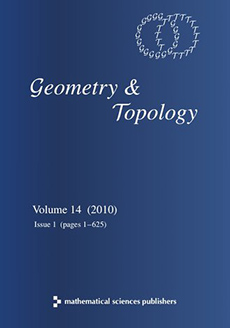Abstract
We introduce a pair of isospectral but non-isometric compact flat 3–manifolds called (a tetracosm) and (a didicosm). The closed geodesics of and are very different. Where has two quarter-twisting geodesics of the shortest length, has four half-twisting geodesics. Nevertheless, these spaces are isospectral. This isospectrality can be proven directly by matching eigenfunctions having the same eigenvalue. However, the real interest of this pair – and what led us to discover it – is the way isospectrality emerges from the Selberg trace formula, as the result of a delicate interplay between the lengths and twists of closed geodesics.
Citation
Peter G Doyle. Juan Pablo Rossetti. "Tetra and Didi, the cosmic spectral twins." Geom. Topol. 8 (3) 1227 - 1242, 2004. https://doi.org/10.2140/gt.2004.8.1227
Information





